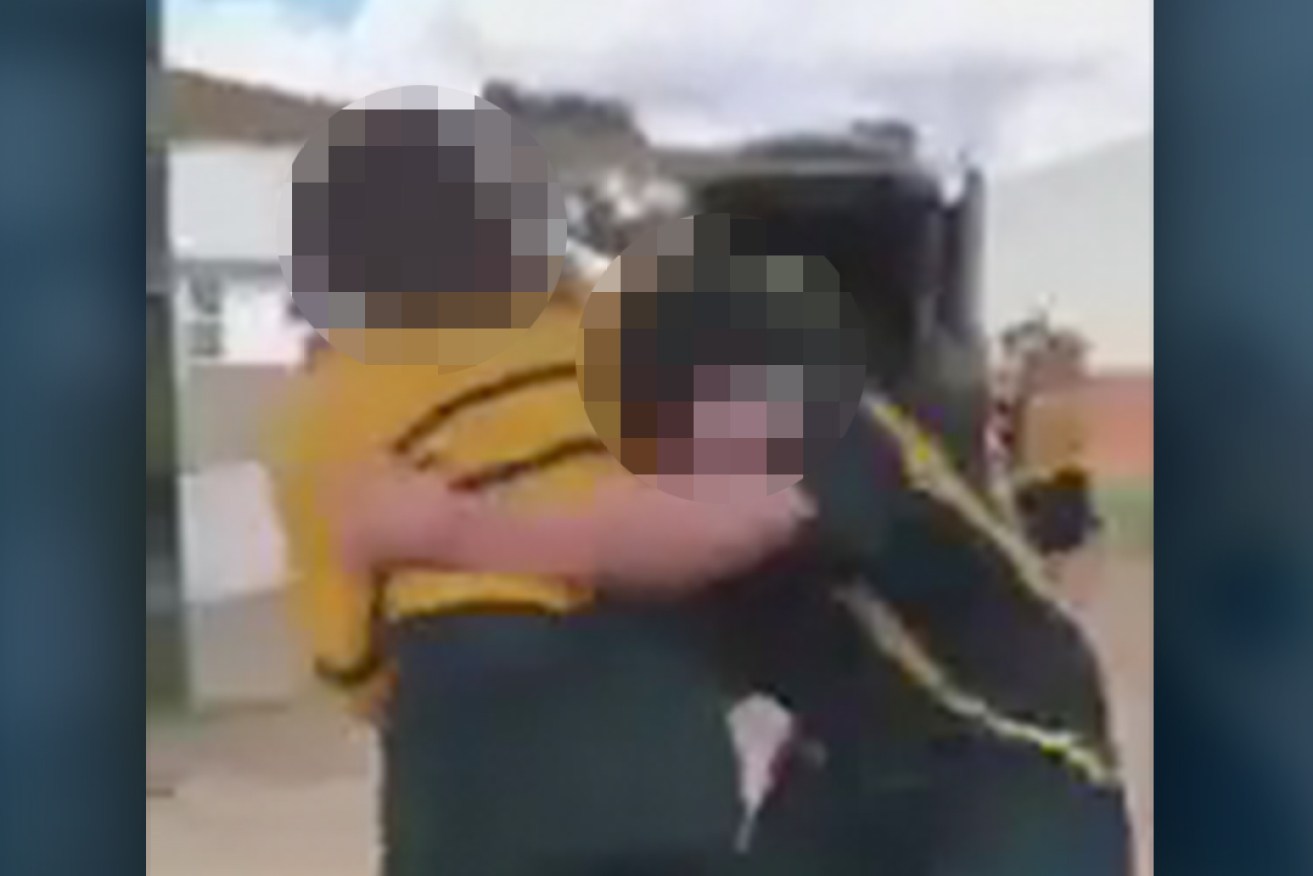‘Zero tolerance’ to bullying not the answer
Successfully addressing school violence begins with recognising it is a wider social issue requiring a whole of community approach, argues Anne Bainbridge

A still image from a videoed fight at an Adelaide school in 2020, one SA principal says behaviour has improved since full-time security staff and new programs were introduced at his school.
There have been multiple articles about bullying and violence in an Adelaide school, and the attention and concern is understandable – seeing violence inflicted by and against children and young people in any setting is alarming.
The commentary has included discussion about actions and solutions, all of which apply a laser focus to the violence and its immediate aftermath. Such attention and investigation can identify shortcomings and force swift action and support, but stigmas don’t benefit anyone involved and the narrowed attention risks ignoring that bullying and violence is not unique to any one school, or even schools generally.
The fact is, bullying and violence occurs throughout our community and is inflicted by people of all ages and sensationalised in all forms of media – not just social media. Combine this with the fact that children and young people are still developing socially and neurologically and model the behaviour of those around them, and it is inevitable that some children and young people will, at times, act in ways that are inappropriate, offensive, or dangerous.
‘Zero-tolerance’ or punitive approaches to bullying and violence lack the flexibility to respond to different contexts and fail to address underlying issues. Suspending a student may be intended to allow time to address issues and make plans, or as a tool of last resort, but evidence indicates that suspensions often lead to more suspensions, not less. This would suggest the approach does not effectively address concerning behaviours and may even increase them.
Schools cannot, nor should they be expected to, effectively address bullying and violence in isolation – it requires partnership between schools, students, parents and caregivers, government and non-government services, and the broader community.
Prevention, early intervention, and support rather than punitive or exclusionary practices would be a better approach as it would provide children and young people with the services, resources, skills, and connections they need to grow and learn in a safe and positive way.
This isn’t about ’letting them off easy’ or ignoring those harmed by bullying and violence, but rather taking steps to address factors that contribute to bullying and violence, such as poor social connections, to prevent incidences from occurring in the first place, or from re-occurring.
This approach requires investment to build and maintain, but its reach and impact will be greater and lead to improvements beyond bullying and violence reduction.
Demonising schools or students is not an effective approach to dealing with bullying and violence, but is nevertheless one that is currently occurring, and it’s damaging.
To address bullying and violence we must recognise that both are social issues, not just school issues, and be willing to commit to and invest in whole-of-community solutions to ensure children and young people get the services and support they need, when they need it.
Anne Bainbridge is chief executive officer, Youth Affairs Council of SA




